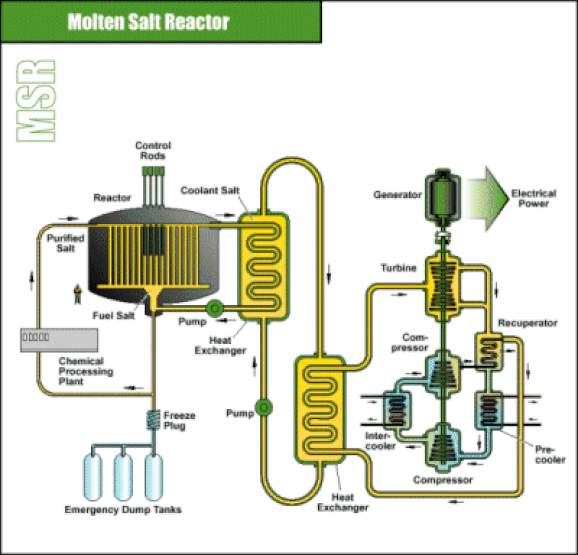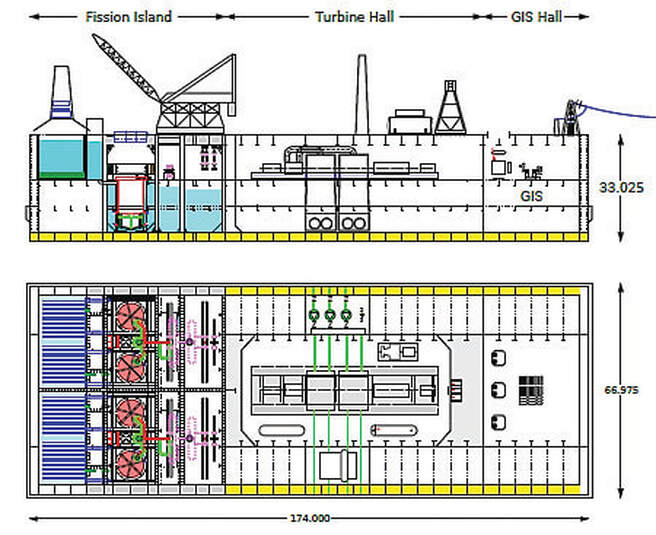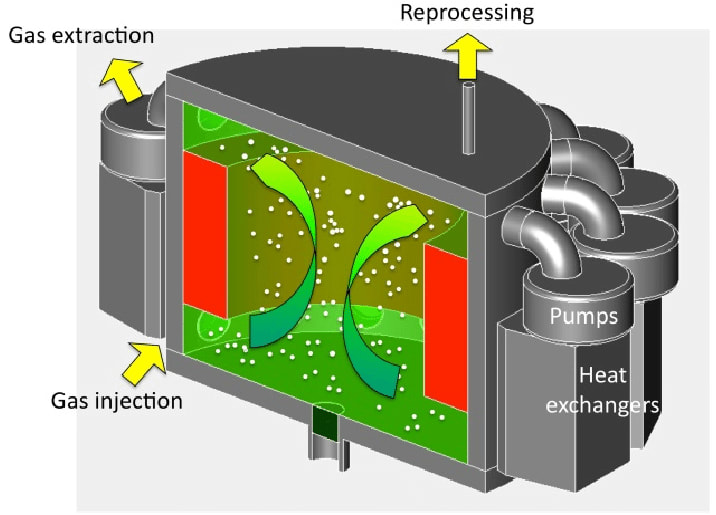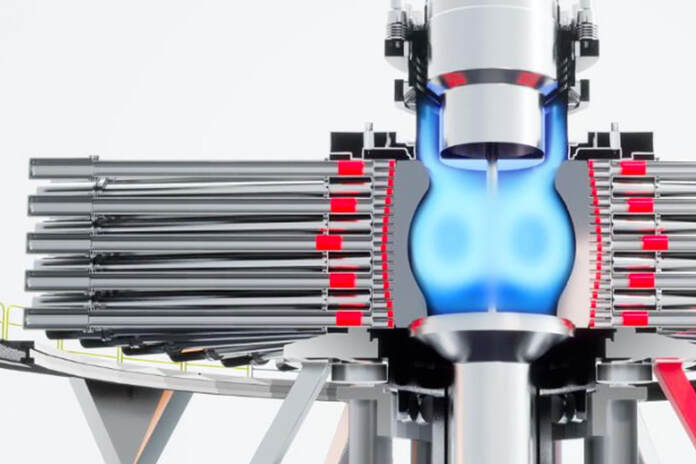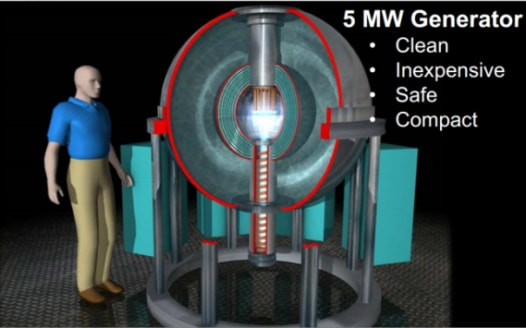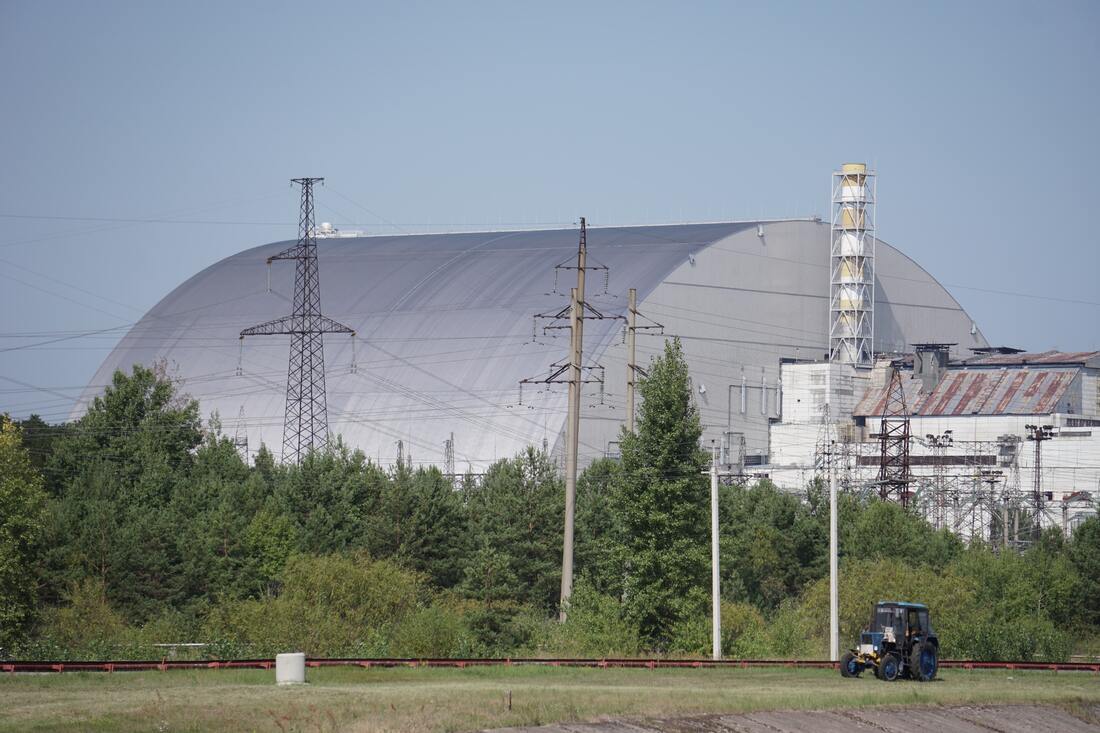 Sarcophagus covering Chernbyl meltdown. romain-chollet-unsplash
Sarcophagus covering Chernbyl meltdown. romain-chollet-unsplash
As recently as perhaps five years ago, I believed that nuclear energy is irredeemably dangerous and dirty. But I try to maintain the scientific headspace, an open mind: I believe what I believe rather strongly, but if you bombard me with overwhelming evidence that doesn’t try to refute the laws of physics, you can change my mind. Sometimes. Maybe. Good luck.
I will still get in the way of anyone trying to build a new pressurized water reactor anywhere near my part of the world. The basic physics of PWRs makes them dangerous and inefficient, and they create wastes that will be radioactive not for the 240,000 years you often read, but for tens of millions of years, the half-lives of some of the radionuclides in nuclear wastes. But several new kinds of fourth generation reactors look much safer, and molten salt reactors in particular look walkaway-safe and virtually idiot-proof. And the right reactors can burn wastes instead of creating them.
I will still get in the way of anyone trying to build a new pressurized water reactor anywhere near my part of the world. The basic physics of PWRs makes them dangerous and inefficient, and they create wastes that will be radioactive not for the 240,000 years you often read, but for tens of millions of years, the half-lives of some of the radionuclides in nuclear wastes. But several new kinds of fourth generation reactors look much safer, and molten salt reactors in particular look walkaway-safe and virtually idiot-proof. And the right reactors can burn wastes instead of creating them.
A MSR cannot melt down: the fuel and coolant salts are already molten. They are just barely molten, at half their vaporization temperature—no vapors—and the radionuclides are dissolved in, chemically bound to, the coolant salts, so very little radionasty could escape to atmosphere should they spill. MSRs produce small amounts of several radioactive gasses, but they can be removed every time the coolant salts circulate, so the amounts lost in a spill would be trivial. And a spill freezes on contact with anything cooler: easy to clean up.
Liquid-fueled MSRs self-regulate: too hot, and the fuel salts expand, moving the reactants farther apart and slowing the reaction. Cooling the salts brings the reactants closer together, increasing the reaction rate and bringing the reactor back up to its optimum temperature and output. Most designs can cool themselves by convection: their pumps are only needed to move the hot salts to the heat exchangers. Most designs drain their coolant/fuel salts down, by gravity, into safe storage tanks that cannot sustain a reaction should the reactor somehow overheat, or lose power. You can literally pull the plug and walk away.
MSRs operate at garden-hose pressures; no possibility of a steam explosion. And without zirconium-clad fuel rods or water or steam in the reactor vessel, there is no chemical reaction that can produce explosive hydrogen. Yet they run at supercritical temperatures, twice as hot as a PWR, and so are more efficient, so you need less plant for the same output. Smaller plants, passive safety and mass production will make 4th Gen MSRs cost much less. Get one design (at a time) approved by the obstructionist Nuclear Regulatory Commission, instead of letting the NRC take years to approve each and every one-off plant; manufacture that design on an assembly line, and truck/rail reactors to the site. Assemble a few components, fuel the reactor, a final inspection by the NRC, and you’re producing power. And the right size reactor—or a few smaller ones—could replace the boiler in a coal-fired power plant, conserving the rest of that expensive, high-embodied carbon infrastructure, and bringing coal off-line that much faster.
MSRs should need much less cooling water than PWRs, and they can recycle it, which is good: most salts are water soluble, so it might be a good idea to keep MSRs away from rivers and oceans in case of any possible spill.
Meanwhile ThorCon is building a prototype “ThorCon Isle” molten salt reactor power plant on a purpose-built ocean-going barge in Indonesia. They think they can use the world’s excess shipbuilding capacity to build 100 complete power plants a year, to head off coal in the developing world, and they think they can produce power for 3.7 cents per kWh, competitive with coal, despite a rather cumbersome fueling and maintenance cycle. I’d rather they were using a more advanced reactor, a waste burner, than the original Oak Ridge National Laboratory MSRe design, but one thing at a time.
One of my objections to nuclear power was/is uranium mining and its attendant environmental destruction and pollution, often on native lands or lands that should be wilderness. Another objection was the wastes created, which would need safe storage far longer than Homo “sapiens” has been "sapient" (assuming we deserve that title). But fast (neutron) reactors should burn high-level wastes (the 96 percent of uranium fuel wasted in PWRs, and all of the transuranics created); and one developer, Elysium Industries, has a simple, inexpensive, two-stage chemical process to dissolve spent fuel (and depleted uranium, unprocessed U-238, plutonium, thorium and U-233, transuranic minor actinides—all of the radionasties we want to burn up) into coolant salts.
Elysium's Molten Chloride Salt Fast Reactor (chloride salts avoid nuclear weapons concerns with and NRC regulation of lithium-based salts; TerraPower is working on a similar design) should leave nothing but gasses that are radioactive for about ten years, then valuable: and solid wastes reduced in volume about tenfold, that are radioactive for about 300 years, instead of millions. That seals the deal for me: safe, reliable, carbon-free baseload power that burns up our high level radioactive wastes instead of leaving them for the great, great . . . great great grandkids to deal with? Heckyeah.
You need fissiles enriched to about 20 percent to fuel a “fast” reactor at start-up. Downblended (bomb grade is 90 percent plus) U-235, U-233, and plutonium from disassembled nuclear weapons is perfect. Sodium cooled reactors and TerraPower's travelling wave reactor should breed fissiles we can use to start-up MSRs, so we need never dig up another Native American Reservation for uranium. We had 80,000 tons of high level wastes stockpiled in the U.S., 300,000 tons around the world, several years ago; more now. That’s enough (U.S. alone) for 533 reactors for 100 years at 1.5 tons consumed per reactor per year, more than enough to supplement renewables until fusion comes on line.
The DOE is spending hundreds of millions of dollars downblending—diluting—its small store of U-233 so it is no longer bomb grade. I hope they are not going below 20 percent. We will need it to help start fast reactors.
General Fusion (Burnaby, B.C.) is even now building a demonstration Magnetized Target “Gobsmacker” fusion reactor, that should burn DT, deuterium-tritium, without the problems attendant in other designs, in England. GF has contracted with H2 Green Steel to build a reactor to power the hydrogen-reduction carbon-free steel mill H2 is building in Sweden. The waste heat from that mill will warm the local district heating grid; cheap, clean heat for thousands of homes.
I don’t think much of the Tokamak design, but there are a couple of very promising “aneutronic”—none of the pesky neutrons at 15 percent of the speed of light that poison the DT reaction--fusion reactors being developed right now. TAE is working with their seventh prototype proton-boron 11-fueled fusion reactor, and expect to have a design ready for commercialization this decade. If Helion Energy's reactor can burn deuterium with He-3, and make its own He-3, their reactor might power part of a city, an aircraft carrier, or a Mars transport vessel. And if Lawrenceville Plasma Physics can make the dense plasma focus work as a fusion engine, they think they can give us 5 MW in a six-foot diameter sphere weighting 3,000 pounds (before you add 3,000 pounds of water—drop one by helicopter—or blimp—wherever you need power) for half a million dollars. That's ten cents per Watt of capacity--unbelievably cheap—and 1/2 cent per kWh. That would pretty much solve the clean energy crisis pretty much everywhere pretty much forever.
Lawrenceville Plasma Physics dense plasma focus, courtesy LPP
We should do all we can with wind, solar, tidal (without messing up any more fish runs) and wave power, and especially geothermal: plasma drills being tested right now by MIT spinoff Quaise Energy, and by PLASMABITS (Slovakia), promise to drill as deep as 20 kilometers, in as little as 100 days, for perhaps 1/10 the cost of rotary drilling. Twenty km will reach rock hot enough to run a geothermal power plant at supercritical temperatures (500 °C), which will hugely increase geothermal energy’s efficiency. And you can drill to hot rock anywhere, including right in the parking lot of a coal-fired powerplant so you can replace the boiler with clean geothermal heat, while continuing to use the rest of that expensive installation. Power plant operators are forced to buy a trainload--100 to 250 cars at 100 to 125 tons each—of coal every day or two. The spot price of coal today was $141.75 per ton, up from $140. Let's use 115 tons per car, x 100 cars x $140/ton, and fuel alone costs them $1,610,000 per day.
It's not going to take long for a deep geothermal well drilled fo "refire" a coal plant to pay for itself.
Biomass with carbon capture and storage done right would clean up the overgrowth in our forests before they immolate us, could replace some fossil fuels with carbon-neutral biofuels and chemicals, and could leave us with lots of char to improve soils and sequester atmospheric carbon at the same time. But wind and solar as the base of this mélange would depend upon lots and lots of energy storage, and the batteries, mostly still lithium-ions, being used for that are expensive, are burning through a rare strategic material the mining of which is usually an ecological disaster, requires a ridiculous ammount of energy, four times as much as aluminum, to refine, and uses conflict/slavery/forced child labor materials, particularly cobalt.
Better batteries and other storage tech is here or near. But enough excess solar/wind capacity to generate a surplus to store, and in particular the technology to store enough for several days, is going to be expensive; I pay attention, and there are weeks on end, in the U.S. in winter, when there is very little sun and too much wind. I don’t believe that the amount of energy storage we’d need to run society on little besides wind and solar is realistic. Just mining themetals needed to make all of those solar collectors is going to be hugely environmentally destructive. See Olivia Lazard's TED talk, “The Blind Spots Of The Green Energy Transition,” https://www.ted.com/talks/olivia_lazard_the_blind_spots_of_the_green_energy_transition?language=en .
I'm afraid she's right. Wind and solar are "high entropy" power sources: they use a lot of materials to generate a relatively small amount of power. In that sense, safe, waste-burning 4th Gen fission is, and fusion will be, "low entropy," much more energy for a much lower investment—in money, energy, carbon, land, metals, minerals, environmental degradatipon and pollution.
American, Swedish, Finnish, Austrian, Canadian, and trans-European entities are all working to bring clean, carbon-neutral steel and aluminum on line this decade, 2026-ish, and together those industries are about 11 percent of climate change (steel alone is 9 percent), so that’s huge. They will use electricity and electrolytes instead of coal, and the waste is either pure oxygen (Boston Metal’s molten oxide electrolysis tech), or oxygen and water (others are pursuing hydrogen reduction of iron ore). (PSSST! Boston Metal's is the better tech. It can use inferior ores—hydrogen reduction can't—takes about 40 percent less energy, all clean electricity, and apparently they can get stainless steel right out of the smelter, when that usually takes two more energy-intensive "melts.")
These folks are going to need lots of power. The way to do this is to size a clean steel mill (or a Tesla megafactory, an aluminum mill or … ) around a small modular molten salt fast-neutron reactor or a helium-cooled fast reactor or a General Fusion gobsmacker or a dozen LPP DPFs or a half dozen PPPL (Princeton Plasma Physics Laboratory) PFRC ( Princeton Field-Reversed Configuration) fusion reactors. That way, for one thing, they’re neither dependent nor a burden on the grid, and they might back up the residential grid in emergencies.
I would much rather humans had never learned to split atoms, but that evil Djinn is already out of the bottle. I urge you to take a fresh, deep, unbiased look at the state of the art in both fission and fusion. The right reactors and fuels relieve my concerns with nuclear power. I think they might yours, too. And fusion is only still 50 years out if we’re waiting on ITER.
---------------------------
I'm not going to include REFERENCES with most of these web pages, but I thought I would with this one, to give you a sense of how deeply I research before I write.
---------------------------
Joe Scott, “Small Modular Reactors: The Model T of Nuclear Energy” Answers With Joe, YouTube June 7, 2021 https://www.youtube.com/watch?v=laGuOleeeNg : I can’t get enthusiastic about any water-cooled reactor, Joe. I wish NuScale were working on an MSR. But otherwise, right on.
------------------
The following are the endnotes from the nuclear energy section of Pumping the Brakes on Climate Change: a Review of the Technologies and Politics that Could Leave the Future a Future.
Click on the links. They activate.
-------------------------
[1] Kristi E. Swartz, “Southern Co. to build landmark small nuclear reactor,” EnergyWire, Nov. 19, 2021, https://www.eenews.net/articles/southern-co-to-build-landmark-small-nuclear-reactor/
[1] Mead Gruver, Associated Press: “Bill Gates company to build reactor at Wyoming coal plant.” eastidahonews, June 3, 2021, https://www.eastidahonews.com/2021/06/bill-gates-company-to-build-reactor-at-wyoming-coal-plant/
[1] “TerraPower, Wyoming Governor and PacifiCorp announce efforts to advance nuclear technology in Wyoming,” PacifiCorp, June 2, 2021, https://www.pacificorp.com/about/newsroom/news-releases/pc-tp-announce-advanced-nuclear-technology-wyoming.html
[1] Nicolas Massoni and Jean-Christophe Ruiz, “Fast Zirconium Oxidation Using Supercritical Water,” Oxidation of Metals, Springer Link, May 17, 2017, https://link.springer.com/article/10.1007/s11085-017-9781-x
[1] Arthur T. Motta, Aylin Yilmazbayhan, Marcelo J. Gomes da Silva and Robert J. Comstock, “Zirconium alloys for supercritical water reactor applications: Challenges and possibilities,” Journal of Nuclear Materials, ResearchGate, Sept. 2007, https://www.researchgate.net/publication/223676496_Zirconium_alloys_for_supercritical_water_reactor_applications_Challenges_and_possibilities
[1] Kashif I. Choudhry and Igor M. Svishchev, “Hydrogen evolution and corrosion behavior of zirconium tubing in sub- and supercritical water,” Materials and Corrosion/Volume 71, Issue / 2 p. 242-248 Wiley Online Library, Aug. 29, 2019, https://onlinelibrary.wiley.com/doi/abs/10.1002/maco.201911082
[1] “Shippingport Atomic Power Station,” Wikipedia, last revision March 29, 2020,
https://en.wikipedia.org/wiki/Shippingport_Atomic_Power_Station
[1] Luisa Kenausis, “Nuclear Waste Issues in the United States,” Center for Arms Control and Non-Proliferation, https://armscontrolcenter.org/nuclear-waste-issues-in-the-united-states/
[1] Radioactivity.eu.com, edp sciences, last accessed Jan, 12, 2021, https://www.radioactivity.eu.com/site/pages/Home_Page.htm
[1] “6 Nuclear Energy Companies Building Molten Salt Reactors,” nanalyze, Oct. 23, 2015 https://www.nanalyze.com/2015/10/6-nuclear-energy-companies-building-molten-salt-reactors/
[1] Taylor Wilson, “My radical plan for small nuclear fission reactors,” TED Talks, Apr. 30 2013, 12:53, https://www.youtube.com/watch?v=5HL1BEC024g
[1] Lee H Clippard, Physics, “Nuclear Fusion-Fission Hybrid Could Destroy Nuclear Waste And Contribute to Carbon-Free Energy Future,” University of Texas at Austin, College of Natural Sciences, Jan. 27, 2009, https://cns.utexas.edu/news/fusion-fission-hybrid
[1] Thomas J. Dolan, “Molten Salt Reactors and Thorium Energy,” ScienceDirect, #27, Issues and conclusions, 2017, https://www.sciencedirect.com/science/article/pii/B9780081011263000270
[1] “ORNL’s [Lou] Qualls tapped for key new reactor development position,” Oak Ridge National Laboratory News, July 20, 2017, https://www.ornl.gov/news/ornl-s-qualls-tapped-key-new-reactor-development-position
[1] M. Mitchell Waldrop, “Nuclear Technology Abandoned Decades Ago Might Give Us Safer, Smaller Reactors,” Discover Magazine, Feb. 26, 2019, https://www.discovermagazine.com/environment/nuclear-technology-abandoned-decades-ago-might-give-us-safer-smaller-reactors
[1] “When Will We Have a Working Molten Salt Reactor?” nanalyze.com, Feb. 24, 2017, https://www.nanalyze.com/2017/02/molten-salt-reactor-when/
[1] “How It Works,” Terrestrial Energy, 2020, https://www.terrestrialenergy.com/technology/molten-salt-reactor/
[1] Molten Salt Reactor schematic, U.S. DOE, Wikimedia Commons, last revised May 28, 2020. https://commons.wikimedia.org/wiki/File:Molten_Salt_Reactor.svg
[1] “Powering up our world with cheap, reliable, CO2-free electric power, now.” ThorCon, 2020, http://thorconpower.com/
[1] Steven Yablonski, “Officials: Tonga volcanic eruption triggered 50-foot tsunami waves, at least 3 dead,” Fox Weather, Jan. 18, 2022, https://www.foxweather.com/weather-news/officials-tonga-volcanic-eruption-triggered-50-foot-tsunami-waves-at-least-3-dead
[1] gordonmcdowell, “ThorCon’s Thorium Converter Reactor update 2019-10,” YouTube, Nov. 4, 2019, 23:29, https://www.youtube.com/watch?v=C2tWXaMm94Q
[1] ThorCon Fuel Cycle, ThorCon 2020, http://thorconpower.com/fuel/
[1] “Thorium Debate/Molten Salt Reactor Forum @ ThEC2018,” YouTube, July 1, 2019, https://www.youtube.com/watch?v=2x7do-_MTD0
[1] M. Taube, “Fast Reactors Using Molten Chloride Salts as Fuel” Final Report (1972-1977); EIR-332 (1978) http://moltensalt.org/references/static/downloads/pdf/EIR-332.pdf
[1] gordonmcdowell, “Downblending U-233 (Uranium-233) with U-238 is Clean-Energy Vandalism. Attn: DOE Secretary Granholm.” YouTube, July 11, 2021, https://www.youtube.com/watch?v=63FQcG3IPJ4
[1] Dirk Van de Voorde, “Elysium Industries MCSFR for Belgium!” YouTube, Dec. 30, 2021, https://www.youtube.com/watch?v=7lET5sDlAQg
[1] gordonmcdowell, “Fast-Spectrum Molten-Salt Reactor - Elysium Industries - Ed Pheil @ TEAC8,” YouTube, Nov. 20,2017, https://www.youtube.com/watch?v=pqVt8cxx-44
[1] gordonmcdowell, “MCSFR - Ed Pheil & Elysium Industries @ International Nuclear Materials Management (2018-03-22)” YouTube, https://www.youtube.com/watch?v=aHsljVnY6oI
[1] “Elysium Industries MCSFR (Molten Chloride Salt Fast Reactor) – Ed Pheil TEAC 10,” Thorium Energy Alliance. No date given, but 2019: accessed June 21, 2021; https://thoriumenergyalliance.com/resource/elysium-industries-mcsfr-molten-chloride-salt-fast-reactor-ed-pheil/
[1] Brian Wang, “Elysium Molten Chloride Salt Fast Reactor will use existing technology for rapid approval.” Next Big Future, July 20, 2018,
https://www.nextbigfuture.com/2018/07/elysium-molten-chloride-salt-fast-reactor-will-use-existing-technology-for-rapid-approval.html
[1] Llewellyn King, “New Design Molten Salt Reactor Is Cheaper To Run, Consumes Nuclear Waste,” Forbes, Oct 13, 2020, https://www.forbes.com/sites/llewellynking/2020/10/13/new-design-molten-salt-reactor-is-cheaper-to-run-consumes-nuclear-waste/
[1] Stable salt reactor, Wikipedia, accessed June 27. 2021, https://en.wikipedia.org/wiki/Stable_salt_reactor
[1] Moltex Clean Energy website, accessed June 27, 2021, https://www.moltexenergy.com/
[1] Ian Scott, “Moltex Stable Salt Reactors,” YouTube, Oct. 15, 2020, https://www.youtube.com/watch?v=V8ApH-0YHkA
141.75
It's not going to take long for a deep geothermal well drilled fo "refire" a coal plant to pay for itself.
Biomass with carbon capture and storage done right would clean up the overgrowth in our forests before they immolate us, could replace some fossil fuels with carbon-neutral biofuels and chemicals, and could leave us with lots of char to improve soils and sequester atmospheric carbon at the same time. But wind and solar as the base of this mélange would depend upon lots and lots of energy storage, and the batteries, mostly still lithium-ions, being used for that are expensive, are burning through a rare strategic material the mining of which is usually an ecological disaster, requires a ridiculous ammount of energy, four times as much as aluminum, to refine, and uses conflict/slavery/forced child labor materials, particularly cobalt.
Better batteries and other storage tech is here or near. But enough excess solar/wind capacity to generate a surplus to store, and in particular the technology to store enough for several days, is going to be expensive; I pay attention, and there are weeks on end, in the U.S. in winter, when there is very little sun and too much wind. I don’t believe that the amount of energy storage we’d need to run society on little besides wind and solar is realistic. Just mining themetals needed to make all of those solar collectors is going to be hugely environmentally destructive. See Olivia Lazard's TED talk, “The Blind Spots Of The Green Energy Transition,” https://www.ted.com/talks/olivia_lazard_the_blind_spots_of_the_green_energy_transition?language=en .
I'm afraid she's right. Wind and solar are "high entropy" power sources: they use a lot of materials to generate a relatively small amount of power. In that sense, safe, waste-burning 4th Gen fission is, and fusion will be, "low entropy," much more energy for a much lower investment—in money, energy, carbon, land, metals, minerals, environmental degradatipon and pollution.
American, Swedish, Finnish, Austrian, Canadian, and trans-European entities are all working to bring clean, carbon-neutral steel and aluminum on line this decade, 2026-ish, and together those industries are about 11 percent of climate change (steel alone is 9 percent), so that’s huge. They will use electricity and electrolytes instead of coal, and the waste is either pure oxygen (Boston Metal’s molten oxide electrolysis tech), or oxygen and water (others are pursuing hydrogen reduction of iron ore). (PSSST! Boston Metal's is the better tech. It can use inferior ores—hydrogen reduction can't—takes about 40 percent less energy, all clean electricity, and apparently they can get stainless steel right out of the smelter, when that usually takes two more energy-intensive "melts.")
These folks are going to need lots of power. The way to do this is to size a clean steel mill (or a Tesla megafactory, an aluminum mill or … ) around a small modular molten salt fast-neutron reactor or a helium-cooled fast reactor or a General Fusion gobsmacker or a dozen LPP DPFs or a half dozen PPPL (Princeton Plasma Physics Laboratory) PFRC ( Princeton Field-Reversed Configuration) fusion reactors. That way, for one thing, they’re neither dependent nor a burden on the grid, and they might back up the residential grid in emergencies.
I would much rather humans had never learned to split atoms, but that evil Djinn is already out of the bottle. I urge you to take a fresh, deep, unbiased look at the state of the art in both fission and fusion. The right reactors and fuels relieve my concerns with nuclear power. I think they might yours, too. And fusion is only still 50 years out if we’re waiting on ITER.
---------------------------
I'm not going to include REFERENCES with most of these web pages, but I thought I would with this one, to give you a sense of how deeply I research before I write.
---------------------------
Joe Scott, “Small Modular Reactors: The Model T of Nuclear Energy” Answers With Joe, YouTube June 7, 2021 https://www.youtube.com/watch?v=laGuOleeeNg : I can’t get enthusiastic about any water-cooled reactor, Joe. I wish NuScale were working on an MSR. But otherwise, right on.
------------------
The following are the endnotes from the nuclear energy section of Pumping the Brakes on Climate Change: a Review of the Technologies and Politics that Could Leave the Future a Future.
Click on the links. They activate.
-------------------------
[1] Kristi E. Swartz, “Southern Co. to build landmark small nuclear reactor,” EnergyWire, Nov. 19, 2021, https://www.eenews.net/articles/southern-co-to-build-landmark-small-nuclear-reactor/
[1] Mead Gruver, Associated Press: “Bill Gates company to build reactor at Wyoming coal plant.” eastidahonews, June 3, 2021, https://www.eastidahonews.com/2021/06/bill-gates-company-to-build-reactor-at-wyoming-coal-plant/
[1] “TerraPower, Wyoming Governor and PacifiCorp announce efforts to advance nuclear technology in Wyoming,” PacifiCorp, June 2, 2021, https://www.pacificorp.com/about/newsroom/news-releases/pc-tp-announce-advanced-nuclear-technology-wyoming.html
[1] Nicolas Massoni and Jean-Christophe Ruiz, “Fast Zirconium Oxidation Using Supercritical Water,” Oxidation of Metals, Springer Link, May 17, 2017, https://link.springer.com/article/10.1007/s11085-017-9781-x
[1] Arthur T. Motta, Aylin Yilmazbayhan, Marcelo J. Gomes da Silva and Robert J. Comstock, “Zirconium alloys for supercritical water reactor applications: Challenges and possibilities,” Journal of Nuclear Materials, ResearchGate, Sept. 2007, https://www.researchgate.net/publication/223676496_Zirconium_alloys_for_supercritical_water_reactor_applications_Challenges_and_possibilities
[1] Kashif I. Choudhry and Igor M. Svishchev, “Hydrogen evolution and corrosion behavior of zirconium tubing in sub- and supercritical water,” Materials and Corrosion/Volume 71, Issue / 2 p. 242-248 Wiley Online Library, Aug. 29, 2019, https://onlinelibrary.wiley.com/doi/abs/10.1002/maco.201911082
[1] “Shippingport Atomic Power Station,” Wikipedia, last revision March 29, 2020,
https://en.wikipedia.org/wiki/Shippingport_Atomic_Power_Station
[1] Luisa Kenausis, “Nuclear Waste Issues in the United States,” Center for Arms Control and Non-Proliferation, https://armscontrolcenter.org/nuclear-waste-issues-in-the-united-states/
[1] Radioactivity.eu.com, edp sciences, last accessed Jan, 12, 2021, https://www.radioactivity.eu.com/site/pages/Home_Page.htm
[1] “6 Nuclear Energy Companies Building Molten Salt Reactors,” nanalyze, Oct. 23, 2015 https://www.nanalyze.com/2015/10/6-nuclear-energy-companies-building-molten-salt-reactors/
[1] Taylor Wilson, “My radical plan for small nuclear fission reactors,” TED Talks, Apr. 30 2013, 12:53, https://www.youtube.com/watch?v=5HL1BEC024g
[1] Lee H Clippard, Physics, “Nuclear Fusion-Fission Hybrid Could Destroy Nuclear Waste And Contribute to Carbon-Free Energy Future,” University of Texas at Austin, College of Natural Sciences, Jan. 27, 2009, https://cns.utexas.edu/news/fusion-fission-hybrid
[1] Thomas J. Dolan, “Molten Salt Reactors and Thorium Energy,” ScienceDirect, #27, Issues and conclusions, 2017, https://www.sciencedirect.com/science/article/pii/B9780081011263000270
[1] “ORNL’s [Lou] Qualls tapped for key new reactor development position,” Oak Ridge National Laboratory News, July 20, 2017, https://www.ornl.gov/news/ornl-s-qualls-tapped-key-new-reactor-development-position
[1] M. Mitchell Waldrop, “Nuclear Technology Abandoned Decades Ago Might Give Us Safer, Smaller Reactors,” Discover Magazine, Feb. 26, 2019, https://www.discovermagazine.com/environment/nuclear-technology-abandoned-decades-ago-might-give-us-safer-smaller-reactors
[1] “When Will We Have a Working Molten Salt Reactor?” nanalyze.com, Feb. 24, 2017, https://www.nanalyze.com/2017/02/molten-salt-reactor-when/
[1] “How It Works,” Terrestrial Energy, 2020, https://www.terrestrialenergy.com/technology/molten-salt-reactor/
[1] Molten Salt Reactor schematic, U.S. DOE, Wikimedia Commons, last revised May 28, 2020. https://commons.wikimedia.org/wiki/File:Molten_Salt_Reactor.svg
[1] “Powering up our world with cheap, reliable, CO2-free electric power, now.” ThorCon, 2020, http://thorconpower.com/
[1] Steven Yablonski, “Officials: Tonga volcanic eruption triggered 50-foot tsunami waves, at least 3 dead,” Fox Weather, Jan. 18, 2022, https://www.foxweather.com/weather-news/officials-tonga-volcanic-eruption-triggered-50-foot-tsunami-waves-at-least-3-dead
[1] gordonmcdowell, “ThorCon’s Thorium Converter Reactor update 2019-10,” YouTube, Nov. 4, 2019, 23:29, https://www.youtube.com/watch?v=C2tWXaMm94Q
[1] ThorCon Fuel Cycle, ThorCon 2020, http://thorconpower.com/fuel/
[1] “Thorium Debate/Molten Salt Reactor Forum @ ThEC2018,” YouTube, July 1, 2019, https://www.youtube.com/watch?v=2x7do-_MTD0
[1] M. Taube, “Fast Reactors Using Molten Chloride Salts as Fuel” Final Report (1972-1977); EIR-332 (1978) http://moltensalt.org/references/static/downloads/pdf/EIR-332.pdf
[1] gordonmcdowell, “Downblending U-233 (Uranium-233) with U-238 is Clean-Energy Vandalism. Attn: DOE Secretary Granholm.” YouTube, July 11, 2021, https://www.youtube.com/watch?v=63FQcG3IPJ4
[1] Dirk Van de Voorde, “Elysium Industries MCSFR for Belgium!” YouTube, Dec. 30, 2021, https://www.youtube.com/watch?v=7lET5sDlAQg
[1] gordonmcdowell, “Fast-Spectrum Molten-Salt Reactor - Elysium Industries - Ed Pheil @ TEAC8,” YouTube, Nov. 20,2017, https://www.youtube.com/watch?v=pqVt8cxx-44
[1] gordonmcdowell, “MCSFR - Ed Pheil & Elysium Industries @ International Nuclear Materials Management (2018-03-22)” YouTube, https://www.youtube.com/watch?v=aHsljVnY6oI
[1] “Elysium Industries MCSFR (Molten Chloride Salt Fast Reactor) – Ed Pheil TEAC 10,” Thorium Energy Alliance. No date given, but 2019: accessed June 21, 2021; https://thoriumenergyalliance.com/resource/elysium-industries-mcsfr-molten-chloride-salt-fast-reactor-ed-pheil/
[1] Brian Wang, “Elysium Molten Chloride Salt Fast Reactor will use existing technology for rapid approval.” Next Big Future, July 20, 2018,
https://www.nextbigfuture.com/2018/07/elysium-molten-chloride-salt-fast-reactor-will-use-existing-technology-for-rapid-approval.html
[1] Llewellyn King, “New Design Molten Salt Reactor Is Cheaper To Run, Consumes Nuclear Waste,” Forbes, Oct 13, 2020, https://www.forbes.com/sites/llewellynking/2020/10/13/new-design-molten-salt-reactor-is-cheaper-to-run-consumes-nuclear-waste/
[1] Stable salt reactor, Wikipedia, accessed June 27. 2021, https://en.wikipedia.org/wiki/Stable_salt_reactor
[1] Moltex Clean Energy website, accessed June 27, 2021, https://www.moltexenergy.com/
[1] Ian Scott, “Moltex Stable Salt Reactors,” YouTube, Oct. 15, 2020, https://www.youtube.com/watch?v=V8ApH-0YHkA
141.75
Tip Jar
